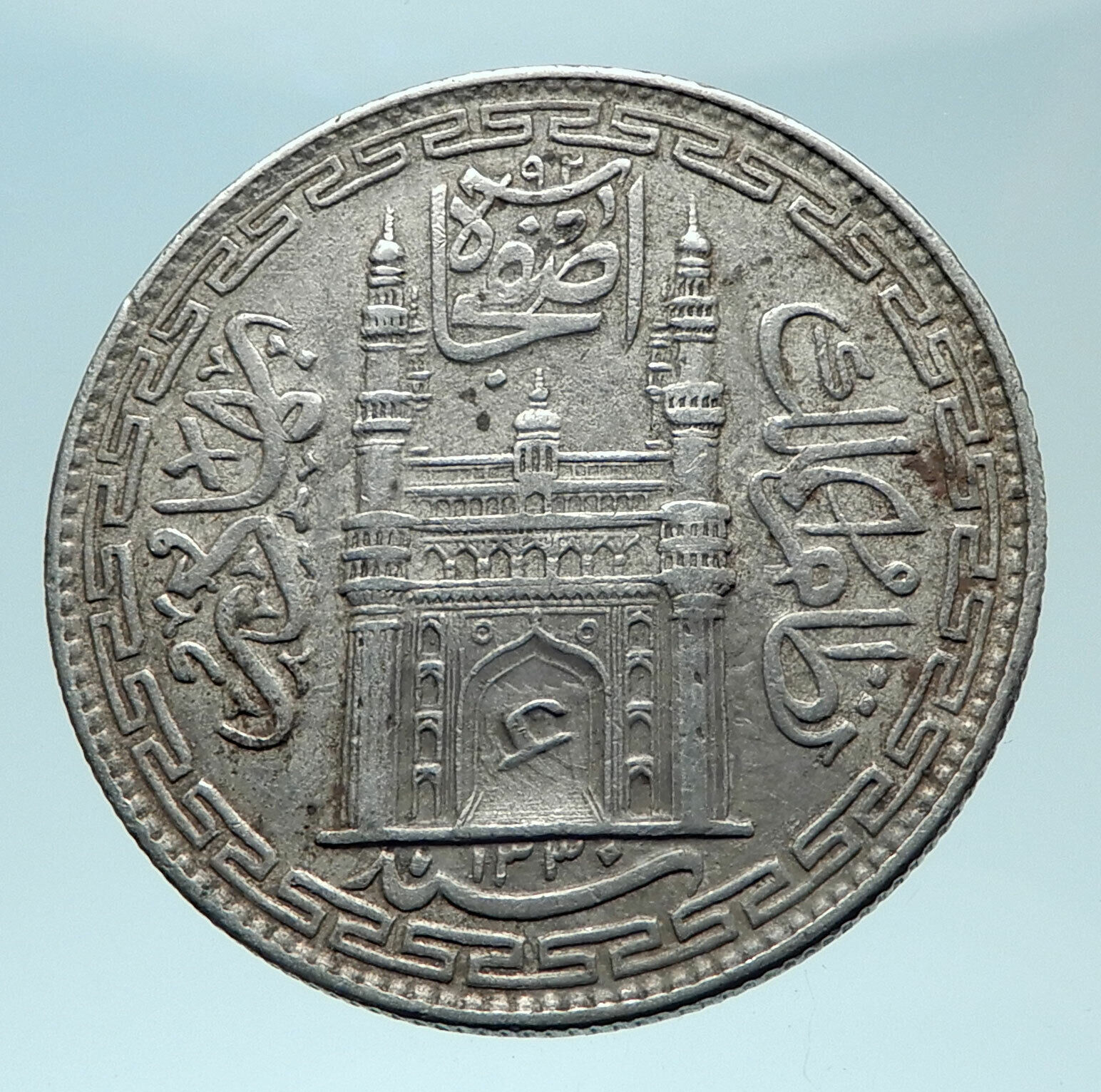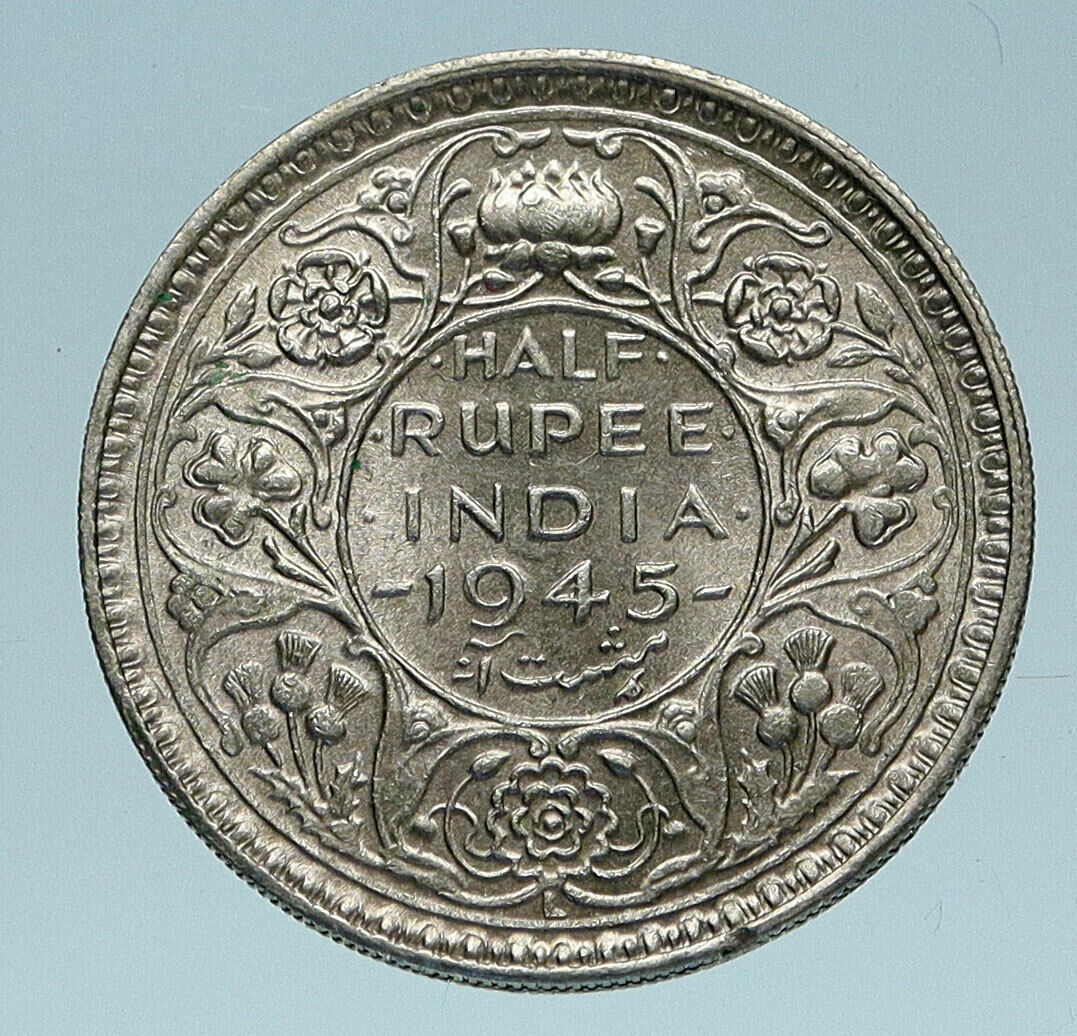|
India – Princely States. Jaipur
Madho Singh II – Maharaja of Jaipur: 1880–1922
Silver Nazarana Rupee 37mm (11.17 grams) Struck 1911 (year 32) Silver Nazarana Rupee 37mm (11.17 grams)
Reference: KM# 147
Obverse Inscription: Victoria…
Reverse Inscription: Madho Singh II
You are bidding on the exact item pictured, provided with a Certificate of Authenticity and Lifetime Guarantee of Authenticity.
 Maharajadhiraja Sawai Madho Singh II GCSI GCIE GCVO GBE (28 August 1862 �” 7 September 1922), was the Maharajadhiraja of Jaipur from 1880 until 1922. He was the adopted son of Ram Singh II, Raja of Jaipur. Maharajadhiraja Sawai Madho Singh II GCSI GCIE GCVO GBE (28 August 1862 �” 7 September 1922), was the Maharajadhiraja of Jaipur from 1880 until 1922. He was the adopted son of Ram Singh II, Raja of Jaipur.
He was born Kaim Singh, the second son of the Thakur of Isardha, a petty chieftain related to the ruling house of Jaipur. After the death of their father, a dispute with his elder brother over the succession left the teenaged Kaim exiled and living in poverty. He found work as a risaldar in the cavalry of the Nawab of Tonk.
His fate was altered by his encounters with the guru Brahmachari Giridhari Sharan, whose disciple he became, and with the ruling Ram Singh II. When Ram died in 1880, he had no heir, and chose on his deathbed to adopt the 18-year-old Kaim, who was crowned under the name Madho. Married a Jadaun lady, daughter of Rao Budhpal Singh of Ummargarh estate, Etah, U.P.
As ruler of the large and prosperous state of Jaipur, Madho Singh embraced modern ideas on education and sanitation. He built schools, colleges, hospitals and a museum. When famine struck in 1896�”1897 and 1899�”1900, he used state funds to feed the population. He also appealed to the Viceroy, Lord Curzon, to start a permanent Famine Relief Fund, which Singh began with a gift of £133,000 (equivalent to £15,309,478 in 2021).
Singh was exceptionally loyal to the British crown, and sent his troops and horses to assist the British side in fighting in Chitral in 1894�”1895, the Tirah Campaign in 1897�”1898 and in the South African War. In the First World War, he again sent his men and machine guns to assist in the Mesopotamian campaign at his own expense.
Singh was made an honorary Major-General, and was further rewarded with honours. He was made Knight Grand Commander of the Order of the Star of India and of the Order of the Indian Empire, and a Knight Grand Cross of the Royal Victorian Order and of the Order of the British Empire.
In 1921, he adopted the second son of the Thakur of Isarda, whose wife was related to his Jadaun Maharani. He died in 1922 and was succeeded by his adopted son, the Maharaja Man Singh.
The Kingdom of Amber, alson known as Kingdom of Dhoondar and Jaipur State, was located in the Rajputana region of India and was ruled by the Kachhwaha clan. It was established by Dulha Rai, possibly the last ruler of the Kachchhapaghata dynasty of Gwalior who migrated to Dausa and started his kingdom there with the support of Chahamanas of Shakambhari in the 11th century. Mostly through 12th to 15th century, the kingdom faced stagnation sources are scarce. Under Chandrasen, it became a Sisodia vassal and fought in the Battle of Khanwa under Prithviraj Kachhwaha.
Under Bharmal, the kingdom heavily aligned with the Mughals and he even married his daughter to Akbar. His son and grandson Bhagwant Das and Raja Man Singh were leading generals in Akbar’s army and helped him in expanding the empire. Mirza Raja Jai Singh served under Shah Jahan and became a distinguished general. He fell out of Aurangzeb’s favor when he was suspected of helping Shivaji escape from Mughal captivity in 1664. Sawai Jai Singh II became the ruler during the decline of the Mughal empire. He successfully rebelled against the Mughals in 1708 to regain his confiscated kingdom. After Jai Singh’s death, the kingdom was drained of its resources during the civil war amongst his sons Ishwari and Madho Singh and the Marathas caused the Kingdom to fall into economic downturn.
It became a princely state under the East India Company rule after signing a treaty creating a subsidiary alliance with the Company in 1818, after the Third Anglo-Maratha War. It acceded to independent India in 1947 and was integrated into India by 1949. Upon integration, the ruler was granted a pension (privy purse), certain privileges, and the use of the title Maharaja of Jaipur by the Government of India. However, the pension, privileges, and the use of the title were ended in 1971 by the 26th Amendment to the Constitution of India.
.jpg/128px-Albert_Hall_(_Jaipur_).jpg) Jaipur, Jeypore, is the capital and largest city of the Indian state of Rajasthan. As of 2022, the city had a population of 4.5 million, Jaipur, Jeypore, is the capital and largest city of the Indian state of Rajasthan. As of 2022, the city had a population of 4.5 million,
making it the tenth most populous city in the country. Jaipur is also known as the Pink City, due to the dominant colour scheme of its buildings. It is also known as the Paris of India, and C. V. Raman called it the Island of Glory. It is located 268 km (167 miles) from the national capital New Delhi. Jaipur was founded in 1727 by the Kachhwaha Rajput ruler Jai Singh II, the ruler of Amer, after whom the city is named. It was one of the earliest planned cities of modern India, designed by Vidyadhar Bhattacharya. During the British Colonial period, the city served as the capital of Jaipur State. After independence in 1947, Jaipur was made the capital of the newly formed state of Rajasthan.
Jaipur is a popular tourist destination in India and forms a part of the west Golden Triangle tourist circuit along with Delhi and Agra (240 km, 149 mi).[14] It also serves as a gateway to other tourist destinations in Rajasthan such as Jodhpur (348 km, 216 mi), Jaisalmer (571 km, 355 mi), Bharatpur (186 km, 116 mi), Udaipur (421 km, 262 mi), Kota (252 km, 156 mi) and Mount Abu (520 km, 323 mi).
On 6 July 2019, UNESCO World Heritage Committee inscribed Jaipur the “Pink City of India” among its World Heritage Sites.[15] The city is also home to the UNESCO World Heritage Sites Amer Fort and Jantar Mantar.
The city of Jaipur was founded by the King of Amber, Maharaja Sawai Jai Singh II on 18 November 1727, who ruled from 1699 to 1743. He planned to shift his capital from Amber, 11 kilometres (7 mi) to Jaipur to accommodate the growing population and increasing scarcity of water. Jai Singh consulted several books on architecture and architects while planning the layout of Jaipur. Under the architectural guidance of Vidyadhar Bhattacharya, Jaipur was planned based on the principles of Vastu Shastra and Shilpa Shastra. The construction of the city began in 1726 and took four years to complete the major roads, offices, and palaces. The architecture of the city was heavily influenced by the 17th century architectural renaissance during Mughal rule in Northern India. Hence much of it resembles architecture styles from around the Muslim world. The city was divided into nine blocks, two of which contained the state buildings and palaces, with the remaining seven allotted to the public. Huge ramparts were built, pierced by seven fortified gates.
During the rule of Sawai Ram Singh I, the city was painted pink to welcome HRH Albert Edward, Prince of Wales (who later became King Edward VII, Emperor of India), in 1876. Many of the avenues still remain painted in pink, giving Jaipur a distinctive appearance and the epithet Pink city.
In the 19th century, the city grew rapidly and by 1900 it had a population of 160,000. The wide boulevards were paved and its chief industries were the working of metals and marble, fostered by a school of art founded in 1868. The city had three colleges, including a Sanskrit college (1865) and a girls’ school (1867) opened during the reign of the Maharaja Ram Singh II.
Large areas of the city including the airport were flooded in August 1981, resulting in the death of eight people and much damage to the city’s Dravyavati River. The floods were caused by three days of cloud burst that produced more rain than the annual average.
|





 Maharajadhiraja Sawai Madho Singh II GCSI GCIE GCVO GBE (28 August 1862 �” 7 September 1922), was the Maharajadhiraja of Jaipur from 1880 until 1922. He was the adopted son of Ram Singh II, Raja of Jaipur.
Maharajadhiraja Sawai Madho Singh II GCSI GCIE GCVO GBE (28 August 1862 �” 7 September 1922), was the Maharajadhiraja of Jaipur from 1880 until 1922. He was the adopted son of Ram Singh II, Raja of Jaipur. .jpg/128px-Albert_Hall_(_Jaipur_).jpg) Jaipur, Jeypore, is the capital and largest city of the Indian state of Rajasthan. As of 2022, the city had a population of 4.5 million,
Jaipur, Jeypore, is the capital and largest city of the Indian state of Rajasthan. As of 2022, the city had a population of 4.5 million, 




